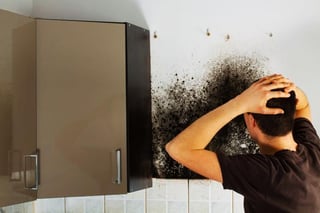Although mold has many medical uses, it can be a huge problem for homes and buildings, especially if mold growth goes undetected. Mold spores spread easily and can grow anywhere, including carpet, clothing, food, paper as well as drywall, areas inside walls, around leaking or condensing pipes, and above ceiling tiles. Since mold cannot be completely eradicated and can be costly to fix, the best approach is to prevent mold before it becomes a problem. So how do you prevent mold growth?
The key to mold prevention is moisture control. Mold cannot grow without moisture.
Here are five ways to handle moisture indoors:
-
Tackle wet areas and repairs right away
-
Fix leaky plumbing and leaks as soon as possible
-
Dry wet or damp spots within 48 hours
-
Clean or repair roof gutters; mold can stem from leaky roof or damaged gutters
-
-
Equip your home with mold-resistant products
-
Place moisture-generating appliances, such as dryers, outside whenever possible
-
Mold resistant products include mold-resistant drywall, mold inhibitors for paint and mold-resistant sheetrock
-
Monitor plants
-
Mold tends to breed well in soil; to prevent mold, try adding Taheebo tea to the plants’ water
-
-
-
Monitor HVAC systems
-
Keep HVAC drip pans clean, flowing properly, and unobstructed
-
-
Maintain low indoor humidity, below 60% RH (ideal range is 30% to 50% RH)
-
Signs of excess humidity include condensation on windows, pipes, and walls
-
-
Ventilation
-
Increase ventilation (if outside air is cold and dry) or dehumidify (if outdoor air is warm and humid)to reduce air moisture levels
-
Increase air circulation by opening doors between rooms, moving furniture away from walls and open doors for closets that may be colder than the outer room
-
-
Heating
-
Increase surface temperature or reduce humidity to prevent moisture from condensing
-
Educate yourself on your region’s climate and how it responds to moisture
-
-
-
Perform regular building/HVAC inspections, maintenance and audits
CLICK HERE to learn how to measure humidity.



